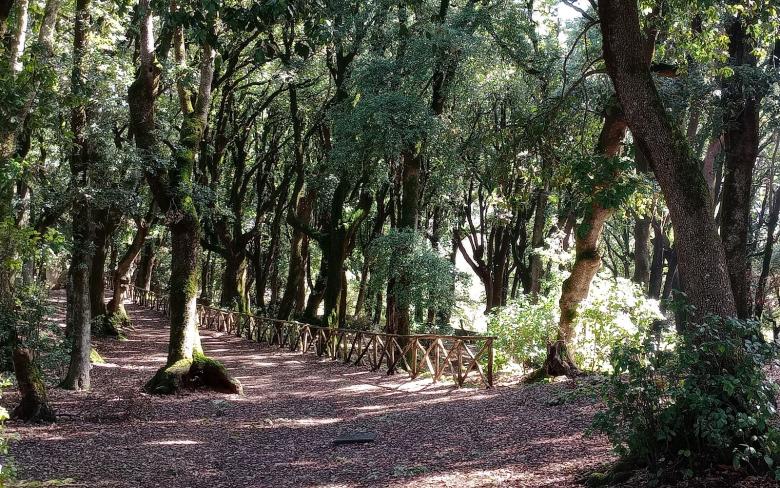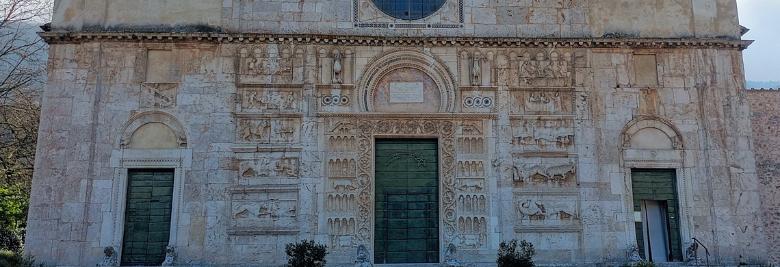Inside the cloistered enclosure is the chapel of St. Catherine of Alexandria. The chapel is sometimes called the Porziuncola di Monteluco; it is an ancient hermitage, dedicated for centuries to the eastern saint who evokes the Syrian hermit movement of the sixth century and marks the beginning of the Franciscan hermitage.
To the left in the small courtyard is the chapel of Saint Bernardino, built ten years after the saint's death, and transformed various times over the centuries.
In the 1950s, what was once a room where firewood was stored became the Oratory of Saint Anthony of Padua to give the parish faithful more space during pastoral functions. In 1994 it was entirely renovated.
The tiny Church of Saints Francis of Assisi and Catherine of Alexandria is home to several important works of art: the chapel to the right is dedicated to the Blessed Leopoldo da Gaiche, depicted in the altar painting done by Giuseppe Moscatelli and his body lies in the transparent coffin under the altar.
The main altar boasts a Madonna and Child with Saints Catherine, Francis, Anthony of Padua, and Joseph painted by Lazzaro Baldi. High up, to the side, are a Madonna delle Grazie, a 12th century work by Carlo Dolci, and a Decapitation of Saint Catherine, a copy done by Ercole Gennari dal Guercino. The altar and the precious engraved wooden tabernacle are works of friar Bernardino di Collelungo and date to the late 17th century, the same period as the walnut cabinets to the side of the altar built at the behest of wealthy Spoletino Francesco Martorelli. They contain a collection of Murano glass and relics donated by the Barberini and Cibo families. There is a small walnut choir in the apse.
One can still see the old cells of the monks at the sanctuary. The seven little cells are what remain of the old dormitory and are those, they say, built by Saint Francis and his companions. The poor materials they used and their small size bear powerful witness to a more heartfelt, yet stricter, meaning of Franciscan poverty.































